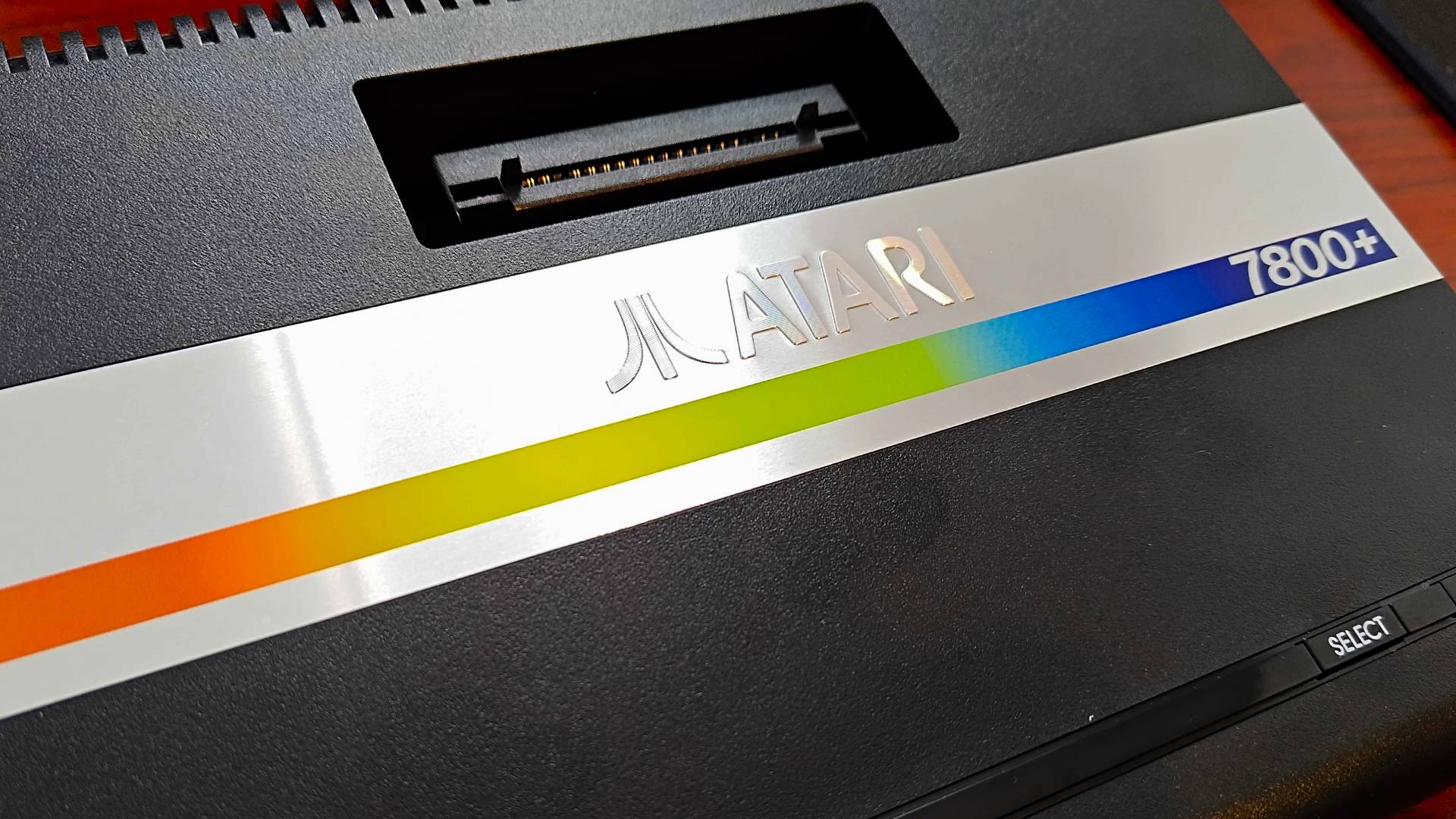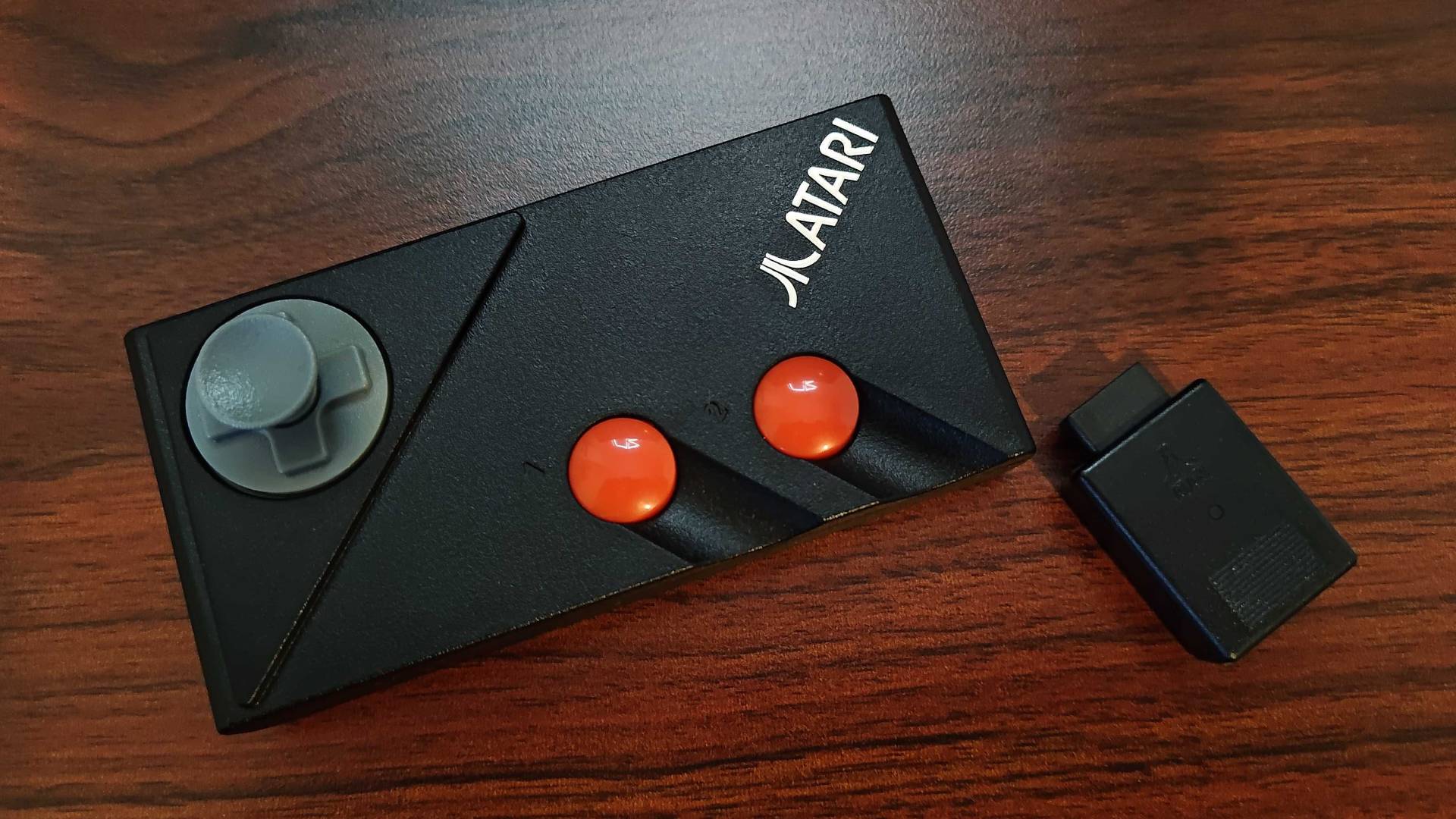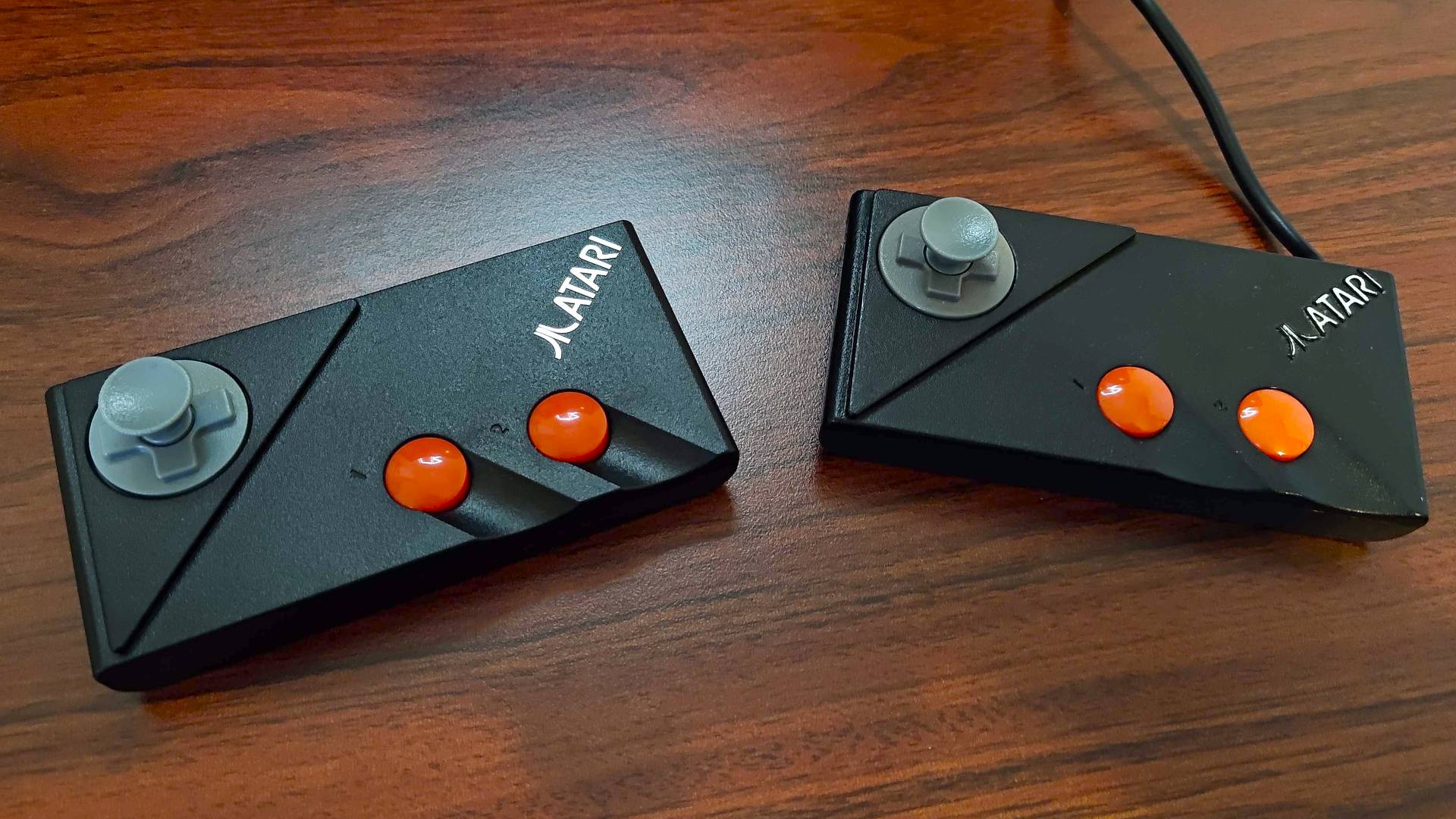
As a preservation enthusiast, it’s safe to say the Atari 7800+ is my kind of retro console remake. Not only does it perfectly replicate the aesthetic and functionality of the ‘80s system, but its physical cartridge support is very much keeping an era of gaming alive that I long every day for. That said, I am slightly bummed out that I’m not currently talking about an Atari 5200+, and the company’s latest re-release does feel a bit like a 2600+ skin swap.
Does the new 7800+ have what it takes to enter the best retro console ring? Well, yes, but it throws the same punches as the Atari 2600+. Both are practically the same device, offering a way to play original and new cartridges using baked-in emulators. Granted, the 7800+ is wearing a different singlet with sexy ‘80s vibes - something players who grew up in that decade will vibe with.
I’m a bit of a soppy nerd when it comes to hardware, and I specifically have a thing for the way consoles feel. By that, I mean even just the texture of plastic or the specific clickiness of a button can instantly send me back in time, evoking memories from many moons ago. I like to think that’s exactly why the Atari 7800+ exists, even if I do have a long wishlist of features that should have been included.
Design

Before I get to the Atari 7800+ and its repertoire of tricks, let’s chat about its snazzy getup. Out is the woodgrain paneling worn by its ‘70s ancestor and in are black angles and a chrome strip. In the best way possible, the design puts me in mind of an old VHS tape box, and while I do think the 7800 would be an LGBTQ ally if it could hold opinions, its spectrum logo is undeniably an ‘80s stable.
Just like the 2600+, the new Atari 7800+ is identical to the original console in almost every way. It’s smaller, but unlike the Atari 400 mini, it avoids mini plug-and-play status thanks to its cart slot. That’s not to say it doesn’t make full use of modern-day luxuries, as you’ll find an HDMI out port and USB-C for power around the back where the old ports used to be. That said, the whole process of hooking it up to your TV, shoving controllers into its front DB9 ports, and grabbing a cartridge to play is effectively the same as 38 years ago, which is very much an intentional design choice.


Build quality is tricky, as while the 7800+ feels pretty light and hollow, the same applies to the original. It doesn’t feel cheap thanks to its high-quality plastic shell and tactile front buttons, but you can tell there’s not a lot going on inside. Not that there needs to be since the system simply dumps your cartridge ROM into memory to be emulated via a single chip, but y’know, it is a little bit floaty.
Thankfully, the 7800+’s weight isn’t much of an issue during normal use, especially since its rubber feet at the bottom save it from skating around your desk when yanked. Of course, that serves as a natural segue to the fact Atari’s latest re-release comes with wireless gamepads based on the CX78 design.


These cursed controllers were the company’s response to the iconic NES pad, and while I genuinely think the CX78 was one of the worst gamepads of all time, the new wireless version is actually serviceable. The buttons and (poor) excuse for a D-pad are far more tactile than my OG version, something I originally put down to aging membranes and contacts. However, the design inside is at least partly responsible for the improved feel, as the pad now uses a single PCB for better rigidity and membranes that sit on the board rather than in divots. Both of those original aspects resulted in a mushy feel over time, so let’s hope the wireless pads can shake off the wheel of time for longer.
Features

I don’t want to be dramatic, but the Atari 7800+ has let me down somewhat in terms of features. Yes, its main conquest is to provide the exact same functionality as the OG console while also boasting HDMI. Do I think that could have been achieved while including excellent visual settings and maybe even luxuries like save states? Absolutely, and I’m not sure why the company keeps dodging what feels like reasonable demands.
As I’ve already touched on, the 7800+ uses emulation under the hood to run physical cartridges, namely Stella and Prosystem. Both applications have been around for a while and provide a sickly number of settings to tinker with, but Atari’s console keeps visual settings pretty trim and their respective OSD well out of the way. I get that keeping things simple is part of the charm, but I don’t think you have to be an enthusiast to want access to things like scanlines and effects.
To gain access to the Atari 7800+ settings menu, you’ll have to hold down the select and reset buttons on the front without a cartridge inserted. Doing so will present you with a 50Hz mode for European TV compatibility, bilinear filtering, and an admittedly pretty cool "phosphor" filter that emulates the look of an old CRT. That latter option is just for 2600 games, though, which is a bit of a kicker.

Just like the 2600+, Atari’s latest version will boot immediately into any compatible cartridge you shove in its slot. I say immediately, but you will see a slash screen for a few seconds while it dumps the ROM into memory. Once you’re in-game, all the same rules apply as back in the ‘80s, meaning you’ll have to use the front pause, select, and reset buttons on the front to do anything to the system. All part of the charm? Perhaps, although it feeds back into Atari’s allergy to software-based features.
Outside of that, I’m in a bit of a mood about the fact the 7800+ can’t run 5200 games. I know, I know - that’s daft since the original couldn’t either, but I would have loved to see this latest mini system serve as an ultimate Atari experience of sorts. Granted, putting together a console with the right cartridge slot and additional emulators may have put the price up a bit, and the company’s weird middle child is relatively obscure at this stage. Nevertheless, it would have helped bring the platform to countries like the UK where it didn’t get an official release and aid physical preservation.
If you are itching to play 5200 games specifically, the Atari 400 Mini boasts support. That said, you’ll need your own collection of ROMs since it lacks a cartridge slot, which helps justify my rant about the Atari 7800+.
Performance

One of the things that delights me about modern emulation-based devices is just how seamless running games can feel. That same technology is what breathes magic into the Atari 7800+, especially when it comes to instantly solving modern connectivity issues. This console is absolutely for the curious players out there who found an old console in the attic only to find that their new-fangled gaming TV lacks anything but HDMI input, and it should save some folks from immediately taking old carts to the dump.
I know for a fact some of you just raised an eyebrow, but let it be known that my own Atari 7800 was rescued from a dumpster about 15 years ago. This is the part where I act like some sort of classic gaming Columbo, as the fact it was rammed into an old grocery bag along with all its controllers, cables, and about ten games tells it its previous owner couldn’t get it hooked up to a modern screen. The worst part is that it was still fully functional, so it almost feels like a ‘Kill Bill’ buried alive scenario.

It is quite amusing to think that a console I found in the trash because it was “too old” over a decade ago runs the same games as the 7800+. You could say it just shows how big the retro-gaming scene has gotten since then, and the situation makes it very easy to compare Atari’s new physical emulation setup to original performance expectations.
It’s easy to forget that while systems like the NES at least had composite connections included to provide easy video output, the OG 7800 had to tune in your TV using an RF. Naturally, even old blocky games like Bounty Bob Strikes Back and Frenzy look far crisper over a clean 720p digital signal than a frequency transmission, but upscaling the visuals to an HD resolution also avoids cramping any original vibes.
Atari claims the 7800+ features “near perfect compatibility” with 2600 and 7800 carts, and I’ve yet to find a game with any issues. Releases like Asteroids Deluxe and homebrews like Bentley Bear's Crystal Quest are an absolute joy to play on this system too – providing something a bit extra that you wouldn’t get with the home console back in the day. Not that I think buying new games is the system’s real draw, as I reckon the real fun is found in finding old dusty capers to try out in HD.
Should you buy the Atari 7800+?

I can say with certainty that the Atari 7800+ is a retro console remake for the ‘80s kids. It sticks pretty closely to the physical formula of the 2600+, but its specific aesthetic, excellent detailing, and new wireless controllers make it a nice alternative to the first revamp. Ultimately, you’re getting a system that performs all the same cartridge tricks as before, so if you’re looking for more features or the ability to play 5200 adventures, you’ll want to broaden your search. Still, if you’re looking to add something new to your console collection, this newcomer deserves a place on your shelf.
How I tested the Atari 7800+
Over two weeks, I played a bunch of games on the Atari 7800+ using both new cartridges and games from my own collection. During that time, I used carts like Food Fight, Frenzy, Fatal Run, Astroids Deluxe, Bounty Bob Strikes Back, and Crystal Castles to compare visual results and gameplay to the original system while also comparing the new wireless gamepads to an original CX78 controller.
For more information on how we test retro consoles and other tech, swing by our full GamesRadar+ hardware policy.







